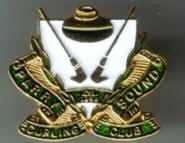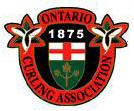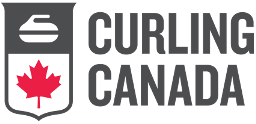The Game Flow
Games consist of either eight or ten "ends" depending on the level of
competition. An end in curling is similar to an inning in baseball. Each end
takes approximately fifteen minutes, so an eight end game would generally take
two hours to play.
Each game, the teams are assigned a sheet of ice (similar to a lane in
bowling) at the curling club.
Pre-Game Routine
The game begins with a handshake. It is customary for each player to shake
hands with each opposing player and each team-mate. Shake hands with the
opponent first.
Practice Slides
Most curlers take a few "practice slides" before throwing the first rock.
This is done by sliding out of the hack area with no rock. Do not throw rocks
prior to any game unless it is specifically mentioned in the league rules.
Practice slides help limber-up the body prior to throwing the first rock.
The Coin Toss
The vice skips on each team toss a coin to determine who has the last rock
advantage in the first end. In most cases the winner of the coin toss chooses to
throw the last rock, the loser of the toss chooses the rock color.
Beginning of the Game
At this point, the skips move to the opposite end of the ice and the team not
delivering moves between the hog lines. The skip calls the shot, the first rock
is thrown, and the game is on.
Note: In many clubs, the rocks are
numbered from one to eight. Unless told otherwise, the lead should throw rocks
number one and two, the second throws three and four and so on.
Each player will throw two stones per end, alternating with the opponent.
Your team throws one, the opposing team throws one, and so on. As the lead is
throwing, the second and vice are designated sweepers, with the skip calling the
shots. When the second is throwing, the lead and vice are the sweepers. When the
vice is throwing, the lead and seconds are sweeping. When it comes time for the
skips to throw, the vice skip takes over responsibility of the house and calls
all sweeping for direction. The lead and second remain as the sweepers for the
skip's shots. Yes, the lead and second sweep more than the vice, and the skip
doesn't sweep at all.
Position of Players
Understanding where to position yourself on the ice is critical to team
performance as well as playing by the rules. The leads and seconds must position
themselves between the hog lines unless they are about to sweep or about to
deliver a rock.
If you are about to deliver a rock, position yourself behind the hack and
remain quiet and still as your opponent delivers. As soon as the opponent
delivers the rock, choose your rock and move into the hack area. While the
opponent's rock is still in motion, begin the setup process in the hack
(described in the Delivery section).
If you are about to sweep, position yourself on the tee line approximately
two feet from the sideline. Confirm the shot and weight with the thrower. As
your team-mate begins to deliver, start moving forward and to the center trying
to "meet" the rock near the hog line. At this point you may begin sweeping the
rock if necessary.
When you have stopped sweeping, return to the other end of the ice. Be sure
not to walk down the center of the sheet, preventing the opponent from viewing.
As you are walking back, try not to distract the opponent in the hack. If time
permits, stop and remain still while the opponent is delivering.
Completing the End
Once all sixteen rocks have come to rest, the vice skips from each team agree
on how many rocks are counting and to which team they belong. Only one team can
score in an end and the most any team can score is eight. Occasionally, when the
counting rock or rocks can't be determined by the naked eye, a special measuring
device is used. Normal scoring in an end may be one, two, three or even four
rocks.
Scoring
Having last rock in any end is clearly an advantage. It's called having the
"hammer". The hammer in the first end is determined before the game by a coin
toss, generally by the vice skips.
After each end, when all sixteen rocks have come to rest, one team will score
one point for every rock it has closest to the center. Only one team can score
in an end. The scoring team gives up the hammer in the next end. If no team
scores in an end, either deliberately or by accident, the hammer is retained.
The vice skip of the scoring team is responsible for posting the score after
each end. On the curling scoreboard, numbers 1 through 16 (possibly 17, 18, 19
etc.) are painted horizontally from left to right. These numbers represent the
rocks scored. At one end of the scoreboard, there is a stack of individual
numbers from 1 to 10. These represent the ends and are hung either over or under
the painted numbers. Since teams throw different coloured rocks, the ends are
hung above or below the painted numbers depending on color. In curling, the
rocks scored are posted cumulatively, meaning two rocks scored in the second end
are added to whatever was scored in the first end (if any).
The team scoring in the end throws first in the next end. This means that the
scoring team will never have last rock advantage after just scoring.
Finishing the Game
At the completion of the game, it is customary to again shake hands with your
opponents and your team-mates.
Why Rocks Curl
Before discussing the mechanics of sweeping, it is important to understand
what is happening underneath the rock as it travels down the ice. Curling rocks
are approximately 12 inches in diameter; however, there is a smaller, ringed
portion that the rock rides on. This narrow ring is about 5 inches in diameter
and is called the running surface.
Rocks are intentionally rotated either clockwise or counter-clockwise when
thrown. Intentional rotation provides the necessary degree of predictability as
the rock travels down the ice. Most rocks, if thrown without a rotation, will
assume a rotation at some unpredictable point. As the rock is rotating, one side
of the running surface will always be moving faster than the other as it travels
over the ice surface.
Example: If a rock traveling down the ice has a clockwise rotation, the left
side of the rock is traveling faster over the ice than the right side.
Differences in pressure create frictional melting that cause a rock to pivot
(or drag) over the slower side. A more detailed explanation of this is provided
in the Field of Play section.
How Sweeping Works
First of all, let's discuss what is happening under the rock as it travels
over the ice. The rock travels over the pebble. The pebble provides a low
contact area with the running surface (the rock rides up on the pebble). The
limited contact area created by the pebble allows a low friction environment to
exist. Simply put, the heavy rock creates friction and causes frictional
melting. The melted ice is more slippery. This naturally occurring frictional
melting helps explain why rocks seem to "glide" down the ice.
Now add sweeping. The sweeping motion briefly polishes the ice (pebble) just
before the rock travels over it. The sweeping action melts a molecular layer of
ice for a very brief moment, resulting in a molecular layer of water. This
creates an even lower friction environment that helps the naturally occurring
frictional melting. This combination allows the rock to decelerate slower. This
results in the rock traveling farther.
The technical definition of sweeping is that it decreases the rate of
deceleration. The overall reduction in friction has another effect: Since the
rock is dragging less on both sides, the rock will travel straighter.
Sweeping cannot make a rock move faster, only farther!





















